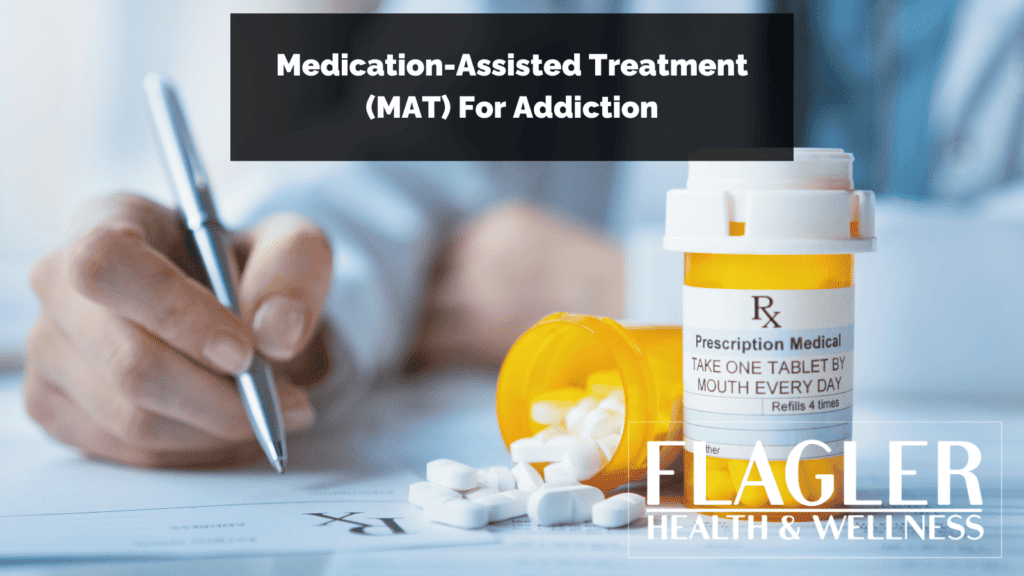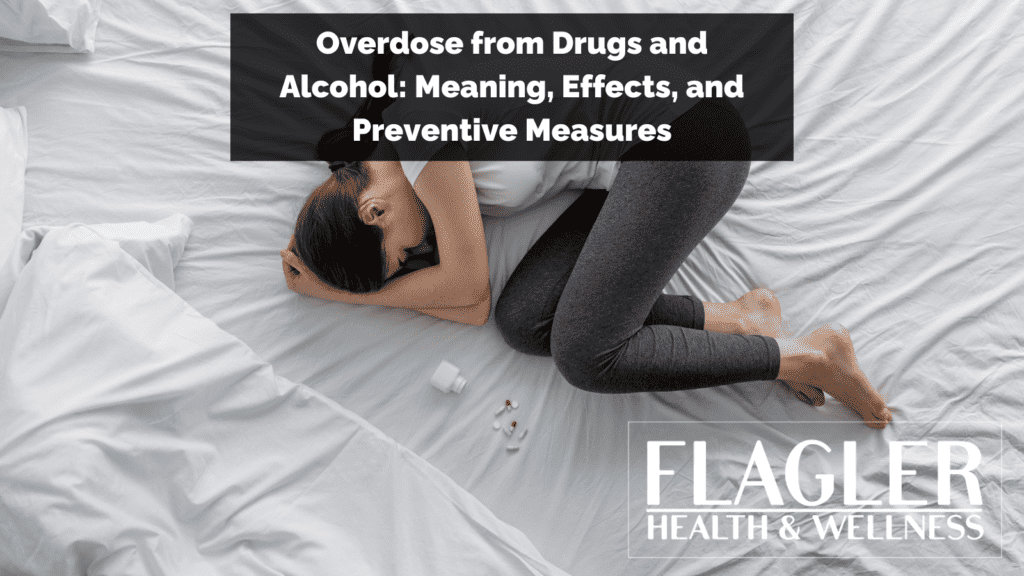Medication-Assisted Treatment (MAT) is an evidence-based approach to combating substance use disorders that combines FDA-approved medications with counseling and behavioral therapies. The primary goal of MAT is to provide a “whole-patient” approach to treatment, targeting not just the physical aspects of addiction but also addressing psychological and social factors.
MAT is primarily used to treat addiction to opioids, including heroin and prescription pain relievers, but it’s also effective in treating alcohol use disorders and, in some cases, other forms of substance abuse.
How Does Medication-Assisted Treatment Work for Addiction?
The effectiveness of MAT lies in its ability to relieve the withdrawal symptoms and psychological cravings that cause chemical imbalances in the body. Medications used in MAT are designed to normalize brain chemistry, block the euphoric effects of alcohol and opioids, relieve physiological cravings, and stabilize body functions without the negative effects of the abused drug. The medications used vary based on the type of addiction being treated.
For instance, methadone, buprenorphine, and naltrexone are commonly used to treat opioid addiction, while disulfiram, acamprosate, and naltrexone are used for alcohol dependence. This medical approach is complemented by psychological and social support, which is equally vital for recovery. Counseling and therapy help patients address behavioral issues and enable them to integrate into society more healthily and sustainably.
Pros and Cons of MAT
Like any treatment method, MAT has its pros and cons. Among the benefits are its ability to reduce the need for inpatient detoxification services, increase patient survival, improve birth outcomes among women who have substance use disorders during pregnancy, and increase a patient’s ability to gain and maintain employment.
However, there are also drawbacks. MAT can be expensive and may not be covered by all insurance plans. There’s also a stigma associated with MAT as some view it as replacing one drug with another, although this is a misconception. Another concern is the potential for the misuse of the medications used in MAT.
Which Addictions Can Be Treated With MAT?
MAT is primarily known for treating opioid addiction, including heroin and opioid painkillers. It’s also effective in treating addiction to alcohol. Recently, there’s growing interest in using MAT to treat other types of substance use disorders, such as benzodiazepines and stimulants, although research in these areas is still ongoing. The specific medication used in MAT varies depending on the addiction being treated and the individual patient’s needs.
1. Opioid Addiction
Opioid addiction includes an addiction to drugs like heroin and prescription opioid painkillers such as oxycontin. Opioids are incredibly addictive and people can benefit from slowly tapering off heavy opioid use with Medication Assisted Treatment, rather than going cold turkey which can lead to relapse and or life-threatening side effects. MAT has been proven to be highly effective in reducing opioid dependence and improving patient outcomes.
2. Alcoholism
Many people on the journey to recovery from alcoholism face challenges with maintaining their sobriety and managing intense cravings. MAT can help reduce these cravings while people do the healing work to find emotional sobriety on their recovery journey.
3. Other Substance Use Disorders
People struggling with addictions to other drugs such as benzodiazepines, cocaine, and meth may be able to benefit from MAT, but there are ongoing studies and clinical trials to develop and verify the best medications for this kind of intervention.
Common Types of Medication Used in MAT
- Methadone: Is mainly used for opioid addiction treatment and must be administered in a clinical setting. It acts on the same opioid receptors as heroin and prescription opioids but without producing the same high, effectively reducing cravings and withdrawal symptoms.
- Naltrexone: Is prescribed for both opioid and alcohol addiction. It works by blocking the euphoric and sedative effects of opioids and alcohol.
- Disulfiram: Is used specifically for alcohol addiction. Disulfiram interferes with the way the body metabolizes alcohol, causing unpleasant symptoms when alcohol is consumed.
- Acamprosate: Is used primarily for alcohol dependence. It helps restore the brain’s chemical balance post-alcohol use, reducing the physical distress and emotional discomfort people can experience when they stop drinking.
How Long Does MAT Last?
The length of time a person stays on MAT can vary. Some individuals may be on MAT for months, while others might need it for years or even indefinitely, depending on their unique situation and needs. The duration is often determined by the patient’s response to treatment, the severity of addiction, and the presence of any co-occurring mental health disorders.
Benefits of Using MAT in Addiction Treatment
Here are some ways MAT has proven to be an effective tool in addiction treatment:
- Reducing Relapse: MAT significantly lowers the risk of relapse by managing withdrawal symptoms and cravings.
- Overall Recovery Enhancement: Improves the ability to maintain employment, enhances social functioning, and reduces criminal activity associated with substance abuse.
- Reducing Overdoses: Particularly in opioid addiction, MAT has been shown to reduce the risk of fatal overdoses.
The Role of MAT in Long Term Recovery
Medication-Assisted Treatment (MAT) plays a critical role in the long-term recovery process for individuals struggling with substance use disorders. Its effectiveness lies not only in addressing the immediate challenges of addiction but also in supporting sustained recovery and relapse prevention. Here’s how MAT contributes to long-term recovery:
1. Stabilizing the Recovery Process
- MAT provides a stable foundation for individuals in early recovery, helping them to manage cravings and withdrawal symptoms effectively.
- By alleviating physical symptoms, MAT significantly reduces the likelihood of relapse, a common challenge in early recovery.
2. Enhancing Engagement in Therapy
- With the physical symptoms of addiction under control, individuals are often better able to engage in therapy and other recovery activities.
- MAT works best in conjunction with counseling and behavioral therapies.
3. Maintenance Therapy
- MAT can help manage cravings and withdrawal symptoms over an extended period, which can last several months or even longer, depending on the needs of the individual.
- Using MAT as maintenance therapy helps individuals maintain sobriety, engage in counseling, and rebuild their lives.
4. Tapering with MAT
- Tapering is the gradual reduction of medication with the aim of eventually stopping it. This process must be carefully managed and tailored to each patient to minimize withdrawal symptoms and prevent relapse.
- Continuous medical supervision and counseling are essential during the tapering phase.
How Do I Know if MAT is Right for Me?
The best way to know if MAT is right for you is to consult a trustworthy medical professional with plenty of experience with addiction treatment. They will take several factors into account, including your history of addiction, physical and mental health, lifestyle, and personal preferences. Finally, you will be able to make a more informed decision once you understand the benefits, risks, and commitments associated with MAT.
Can I Get Addicted to Drugs Used in MAT?
Yes, you can get addicted to drugs used in MAT because some medications used have a potential for dependence.
When used as prescribed, the risk of addiction is significantly lower than the risk associated with untreated addiction. In general, MAT medications are carefully monitored and dosed to minimize abuse potential when administered by addiction professionals.
Is MAT Safe?
Yes. MAT is considered safe and effective when administered under the guidance of a healthcare provider. Mat requires regular monitoring for side effects and adjustments in treatment as needed. MAT is safest when it is part of a larger treatment plan that includes counseling, support groups, and therapy.
Share This Post







